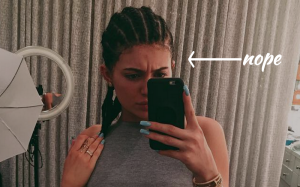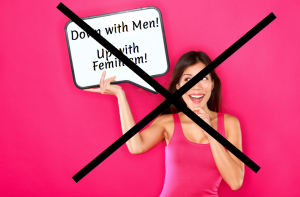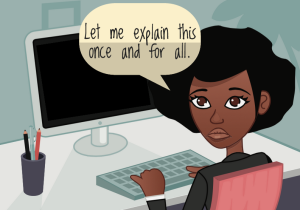
Protestors holding ‘Health Care For All’ signs.
Right now, at least 11% of adults don’t have health insurance in the U.S — the 13th richest country in the world. A nation that doesn’t take care of its sick is one where every life clearly doesn’t matter.
There is a growing movement of folks who want to transform our capitalist healthcare system into one where everyone receives the same publicly-funded health insurance.
More Democrats than ever are advocating for single payer healthcare as a progressive alternative to President Trump’s failing efforts to repeal the Affordable Care Act — namely, by rolling back Medicaid expansion and providing massive tax cuts to the rich.
It’s no secret that the ins-and-outs of our healthcare system are overwhelming to navigate, and it can be hard to stay engaged in the national dialogue. So, we put together these key points to help break down what you need to know about single payer healthcare from an intersectional feminist perspective:
1. Single payer healthcare is funded by the government with taxpayer money but privately delivered in hospitals and doctor’s offices.
Under single payer, everyone is covered, regardless of age, gender, employment status, residency status or any other factor.
2. In countries with single payer, patients never see a bill.
They choose any doctor they want without worrying if their insurance will cover it. Doctors prescribe treatment to their patients without being concerned whether it’s covered.
While single payer is a new concept to many, it’s hardly a novel idea. Socialists, communists, worker organizations, and academics have been calling for a national health insurance program in the U.S. since the beginning of the 20th century.
Former President Harry Truman’s universal healthcare proposal in 1949 received pushback from both the American Medical Association and employer-based insurance companies that gained popularity after World War II.
However, the loudest opponents to single payer were whites, especially Southerners, who weren’t in favor of public entitlements that benefited Blacks. While Canada and several European countries passed single payer, the U.S. didn’t because of its deeply rooted racism.
3. Single payer doesn’t solve systemic oppression, but it does provide access to healthcare for the historically oppressed communities who need it most.
According to Stephanie Nakajima, Director of Communications at Healthcare-NOW, single payer has helped Canada almost eliminate racial gaps in unmet medical needs.
Single payer also ensures that each person has the ability to make their own decisions about their reproductive health. Currently, lacking adequate health insurance forces people to get unwanted abortions or to not have children even if they want them.
4. Abortion, contraception, and prenatal care would all be covered under single payer.
Furthermore, people wouldn’t have to pay higher insurance premiums or be denied coverage because of their ability to give birth.
As an intersectional feminist, I believe single payer aligns better with my values than our current profit-driven healthcare system. It would make accessing healthcare easier for Americans who hold multiple oppressed identities and have barriers to getting care.
I’ve never believed the hype about the U.S. having the best healthcare in the world because of the negative experiences I’ve had while navigating the system as a working-class Black genderqueer person.
There have been times I couldn’t go to the doctor or get medications because I didn’t have health insurance. Nobody should ever have to be in this situation, especially not in a country with so much wealth.
5. It doesn’t “cost too much money.”
Republicans say we can’t afford single payer. In reality, we can’t afford not to have universal healthcare. Nakajima says the U.S. spends 18 percent of our GDP on healthcare while most other “developed countries” spend only about 12 percent.
healthcare is bankrupting our economy, as well as bankrupting individuals who fall into medical debt, including people who have health insurance.
Most of us would pay less in taxes towards single payer than we currently pay to private insurance companies. 95 percent of Americans would pay less for their healthcare under single payer.
According to Dr. Susan Rogers, a national board member of Physicians for a National Health Program, hospitals pay about 25 percent of their revenue towards administration.
Single payer would get rid of these excessive administrative costs by eliminating the need for endless insurance paperwork. These savings would go towards the increased costs of getting everyone covered under the new system.
6. MYTH: We won’t be able to see the doctor because the wait will be too long.
FACT: Conservatives claim healthcare will be rationed under single payer, meaning there won’t be enough healthcare to go around for everybody due to high demand. They say that rationing will result in never-ending waiting times and waiting lists to see a physician.
The truth is the U.S. already rations healthcare according to people’s ability to pay. Also, our waiting times to see both general practitioners and specialists are on par with — and sometimes worse than — other countries with single payer.
7. Americans WON’T become more unhealthy.
We’re already unhealthy. The United States currently has some of the worst health outcomes of any industrialized nation.
On average, our healthcare spending per person is $10,000 each year, while countries with much fewer resources have better health outcomes.
The U.S. holds the unfortunate title of being the only “developed country” with a rising number of mothers dying during childbirth, a phenomenon that disproportionately impacts Black women.
Furthermore, Nakajima says that Black people are almost twice as likely to be uninsured than whites, and Latinx people are almost three times more likely than whites to be uninsured.
8. The fight for universal healthcare is one that should be centered in all social justice movements.
We can’t end oppression if we don’t have the healthcare we need to survive.
Single payer isn’t perfect, but it doesn’t deserve the bad reputation it’s earned in the right-wing media. It’s important to counter their misinformation as single payer becomes a part of mainstream conversations.
Under single payer, people of color in the U.S. may be able to enjoy healthier lives. And, while it cannot erase the discrimination we generally face in healthcare settings, single payer would give our communities guaranteed access to the care we need.
***
As of now, several states have tried to pass single payer through their legislatures or ballot initiatives, but only Vermont has succeeded (their program only lasted from 2011 to 2014).
Since the late 1990s, a grassroots group in the state of Washington, Health Care For All-WA, has advocated for a single payer bill called the WA Health Security Act, but unfortunately, it’s never gotten past a hearing. You can find out what’s happening in your own state here.
The federal single payer bill, called The Expanded & Improved Medicare For All Act (HR 676), has been introduced in Congress by Rep. John Conyers each year since 2003. The bill has grown from having 49 sponsors in 2015 to now having 116 cosponsors.
If single payer is something you want to support, contact your state and federal lawmakers. Educate your friends about what you’ve learned here so they know that a more just healthcare system is possible, one where nobody gets left behind.
[do_widget id=’text-101′]
Neesha Powell-Twagirumukiza (she & they pronouns) is an Everyday Feminism Reporting Fellow. Neesha identifies as an intersectional feminist, womanist, writer, community organizer, facilitator, dancer, freedom fighter, wife, and cat mama. She’s constantly conspiring in the name of liberated Black futures, queer and trans people of color power, solidarity economics, and transformative justice/community accountability. Neesha’s based in a suburb south of Seattle, where she lives, loves, and creates with chosen family.
Search our 3000+ articles!
Read our articles about:
Our online racial justice training
Used by hundreds of universities, non-profits, and businesses.
Click to learn more



















